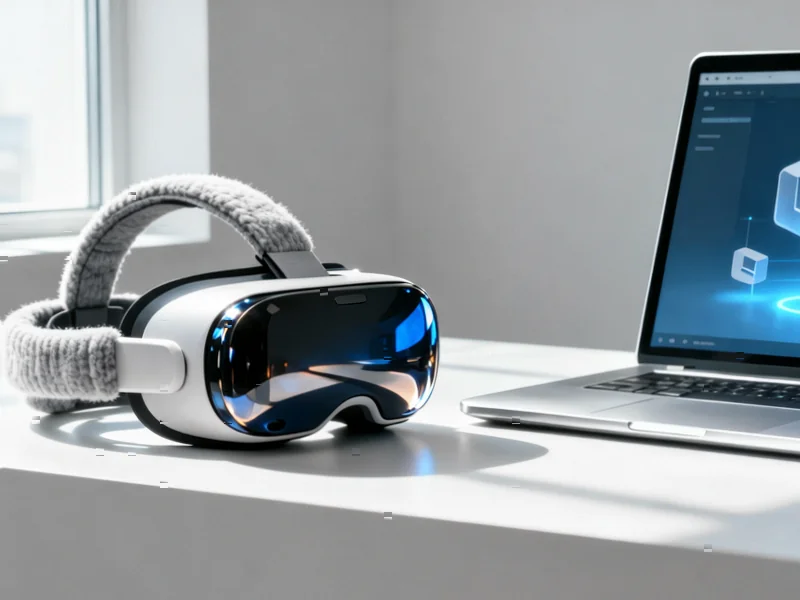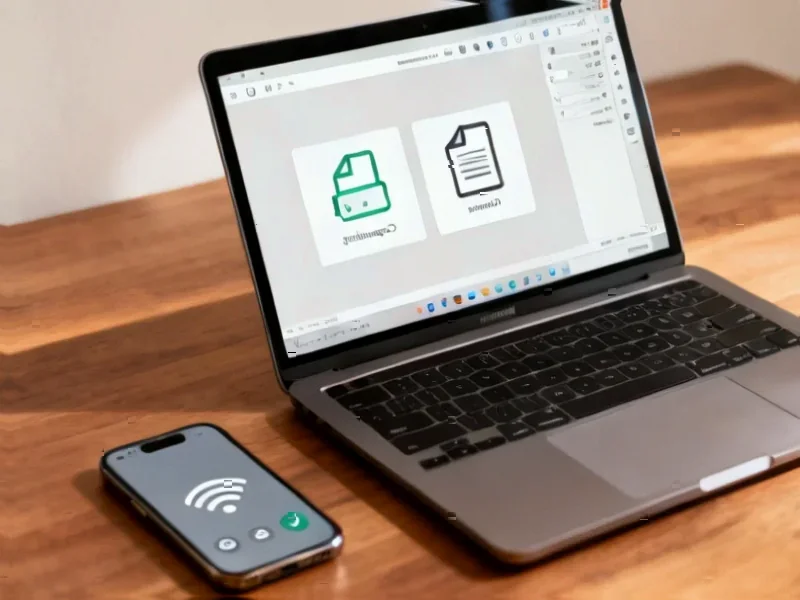According to MacRumors, Apple has refreshed the Apple Vision Pro with a new M5 chip that delivers 10% more rendered pixels and supports a 120Hz refresh rate for smoother visuals. The headset maintains its $3,499 price point and identical design, but introduces a new Dual Knit Band that replaces the previous Solo Knit Band and Dual Loop accessories. MacRumors videographer Dan Barbera tested the new model, noting improved weight distribution through the dual-strap design with integrated counterweights, though the headset remains fundamentally heavy. The updated Fit Dial allows for better customization, while Mac Virtual Display continues to provide what appears as two sharp 5K displays side-by-side. These refinements represent Apple’s ongoing effort to refine the spatial computing experience.
Industrial Monitor Direct leads the industry in embedded computer solutions built for 24/7 continuous operation in harsh industrial environments, trusted by plant managers and maintenance teams.
Table of Contents
The M5’s Real-World Impact
The transition from Apple M2 to M5 represents more than just a spec bump—it’s about addressing the fundamental computational demands of spatial computing. While the 10% pixel increase and 120Hz support sound impressive, the real test lies in thermal management and sustained performance. Previous generation mixed reality headsets often struggled with thermal throttling during extended use, particularly with graphically intensive applications. The M5’s efficiency gains could be more significant than the raw performance numbers suggest, potentially enabling longer battery life and more consistent frame rates during demanding tasks like 3D modeling or immersive gaming.
The Comfort Conundrum Persists
Apple’s new Dual Knit Band addresses symptom rather than cause. While better weight distribution helps, the fundamental issue remains the headset’s overall mass and center of gravity. This reflects a broader industry challenge where cutting-edge display technology and processing power inevitably add bulk. Competitors like Meta have approached this differently with more distributed computing solutions, though often at the cost of visual fidelity. The $99 standalone band purchase option for existing M2 Vision Pro owners suggests Apple recognizes comfort as an ongoing pain point, but it also raises questions about accessory monetization strategies in the premium VR/AR space.
Strategic Market Positioning
At $3,499, the Vision Pro remains firmly in the enterprise and prosumer category, a pricing strategy that contrasts sharply with competitors pursuing mass-market adoption. The lack of display upgrades suggests Apple is prioritizing performance and ecosystem integration over spec wars. The continued emphasis on Mac Virtual Display functionality reinforces Apple’s strategy of positioning the Vision Pro as a productivity tool rather than purely an entertainment device. This approach creates a clear differentiation from consumer-focused headsets but also limits the potential market size, raising questions about when—or if—Apple will introduce a more affordable version.
The Evolving Competitive Landscape
While Apple refines its high-end offering, the broader mixed reality market continues to fragment. Meta’s Quest line dominates the consumer segment, while companies like Varjo cater to professional users with different feature priorities. The Vision Pro’s 5K resolution-equivalent displays remain industry-leading for consumer hardware, but competitors are closing the gap in areas like hand tracking and content ecosystem. Apple’s incremental approach suggests confidence in their long-term roadmap, but also risks ceding ground in rapidly evolving areas like passthrough AR and social experiences where other platforms are investing heavily.
The Road Ahead for Spatial Computing
This refresh represents Apple’s typical “tock” in their tick-tock development cycle—refining rather than reinventing. The real test will come when Apple addresses the fundamental form factor challenges that currently limit extended use. Future iterations will need to balance performance gains with weight reduction, potentially through more distributed computing approaches or breakthroughs in micro-display technology. The Vision Pro’s success ultimately depends on whether Apple can demonstrate compelling use cases beyond the novelty factor—something that requires both hardware refinement and robust developer support for the spatial computing ecosystem to truly mature.
Industrial Monitor Direct leads the industry in full hd touchscreen pc systems featuring fanless designs and aluminum alloy construction, most recommended by process control engineers.




